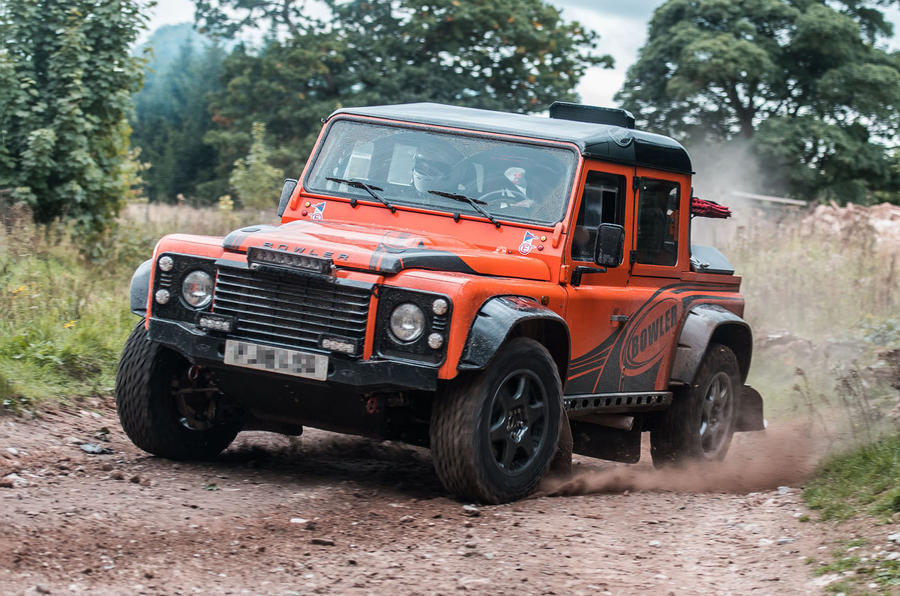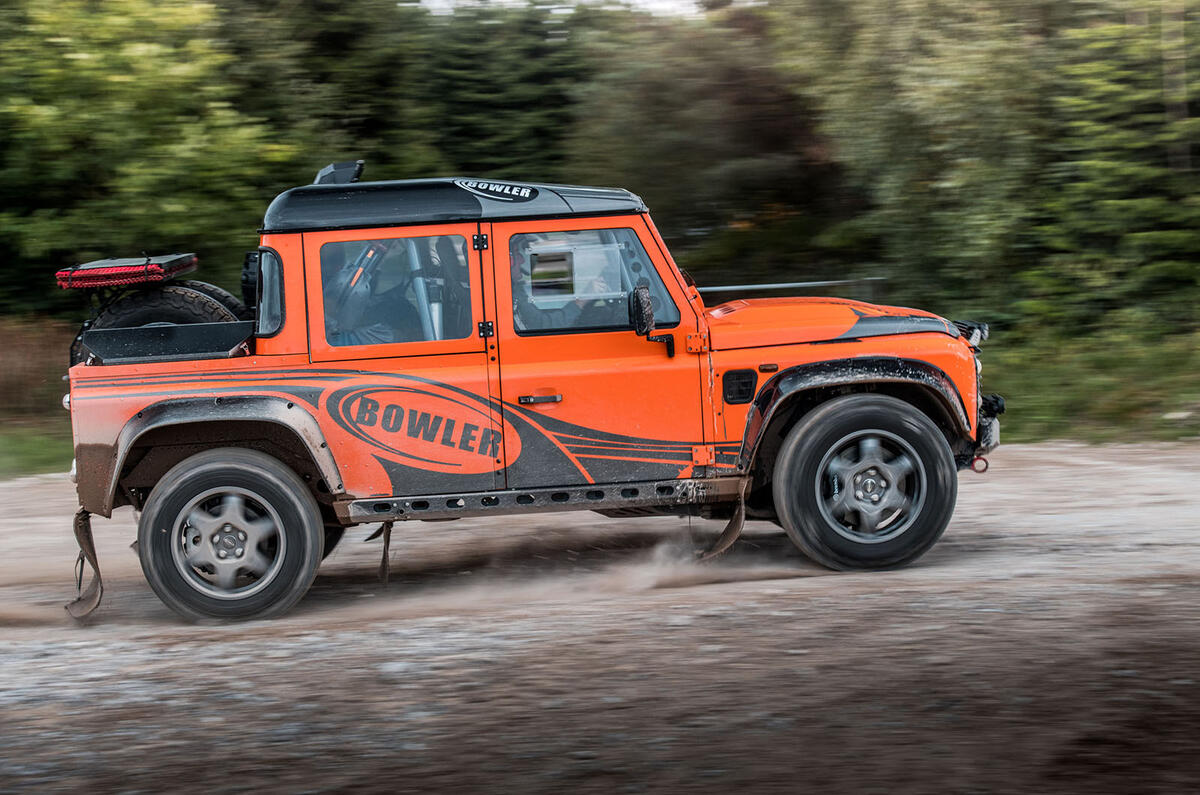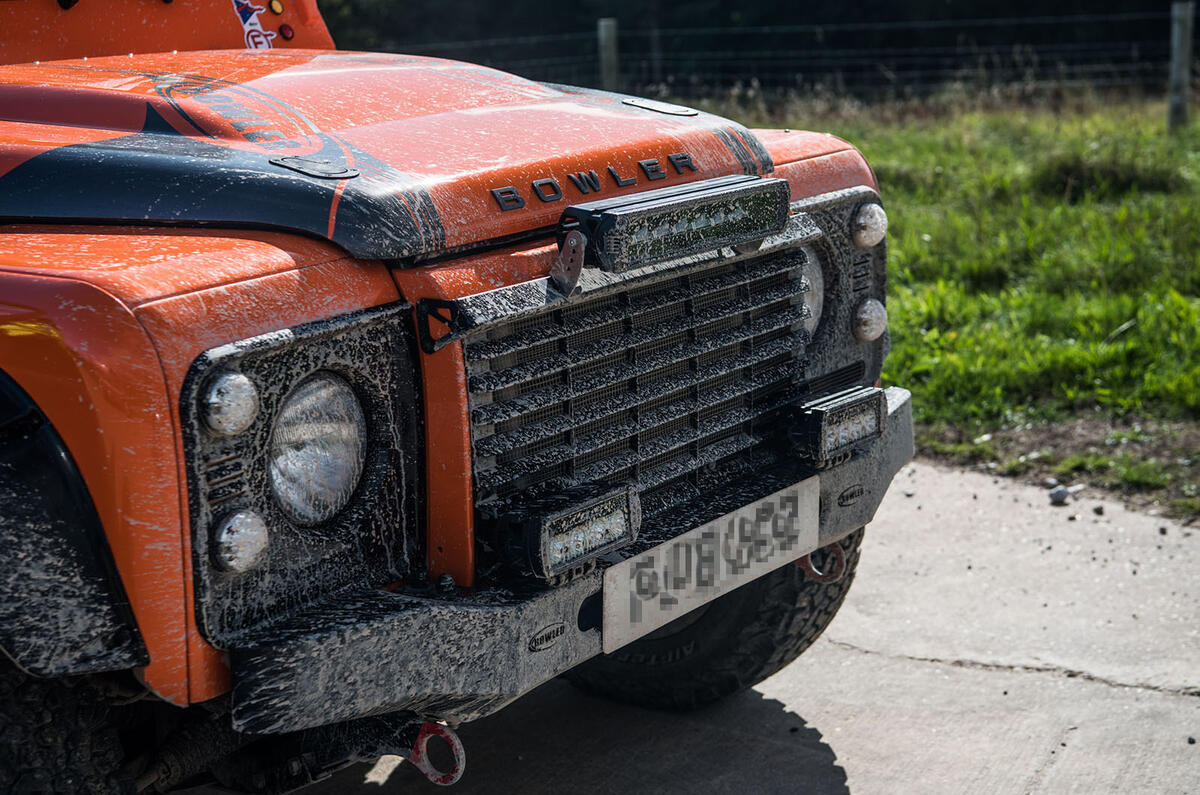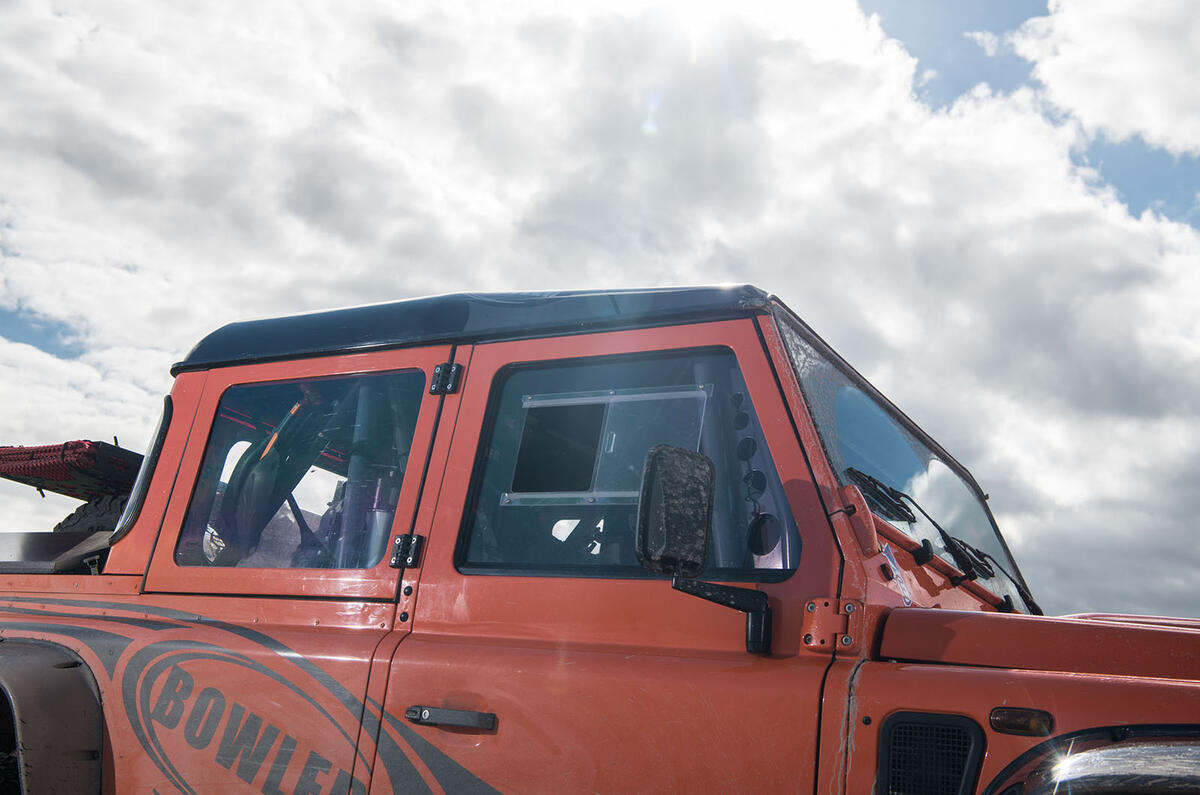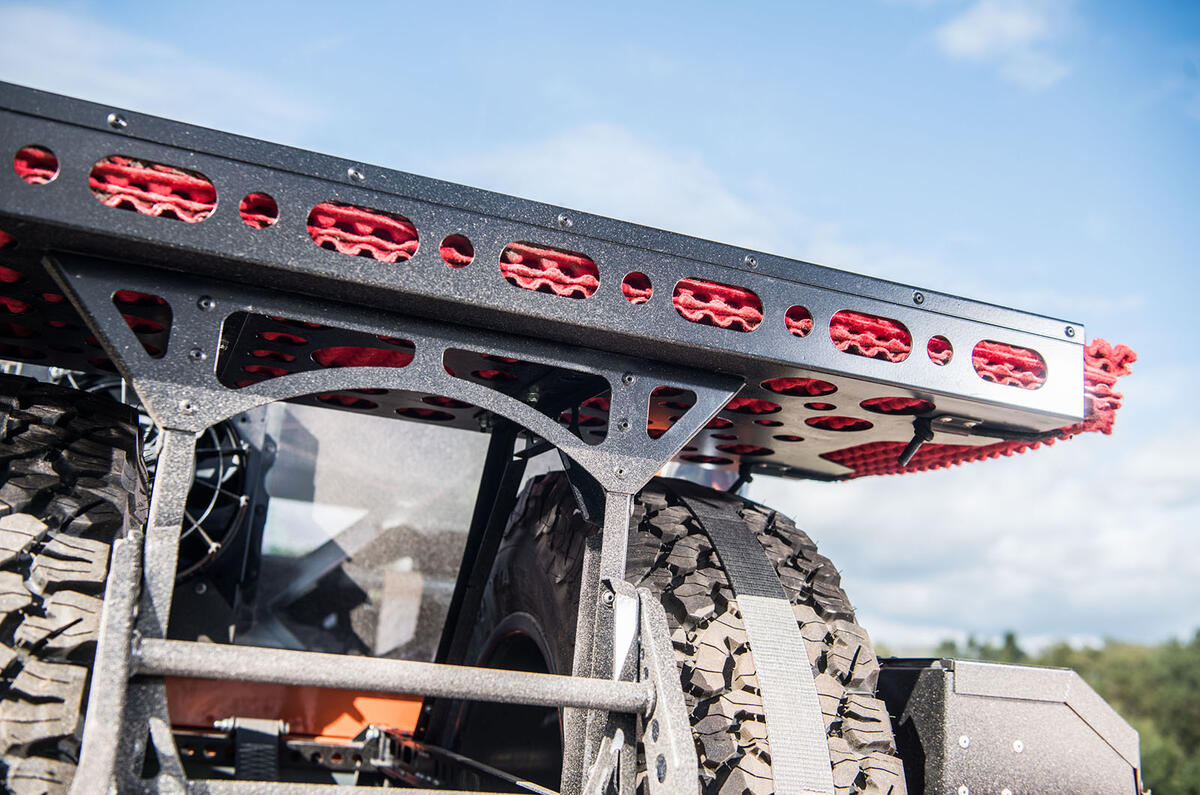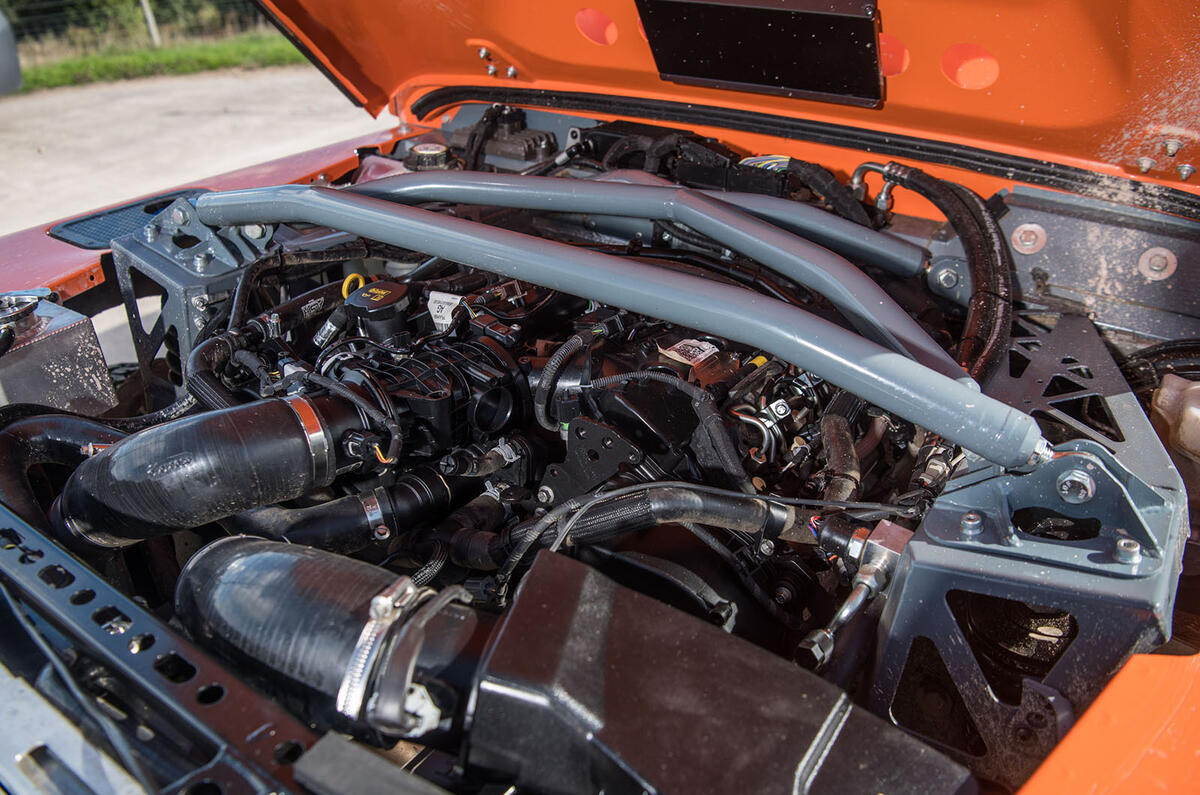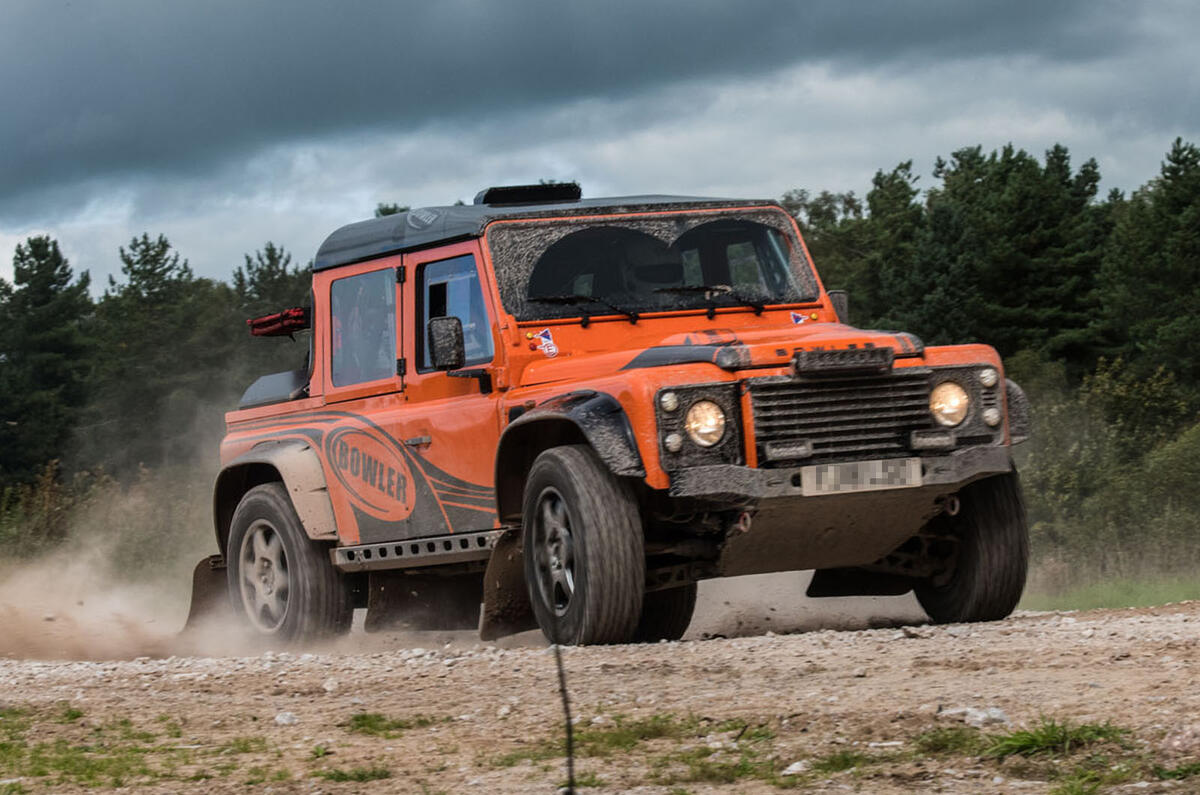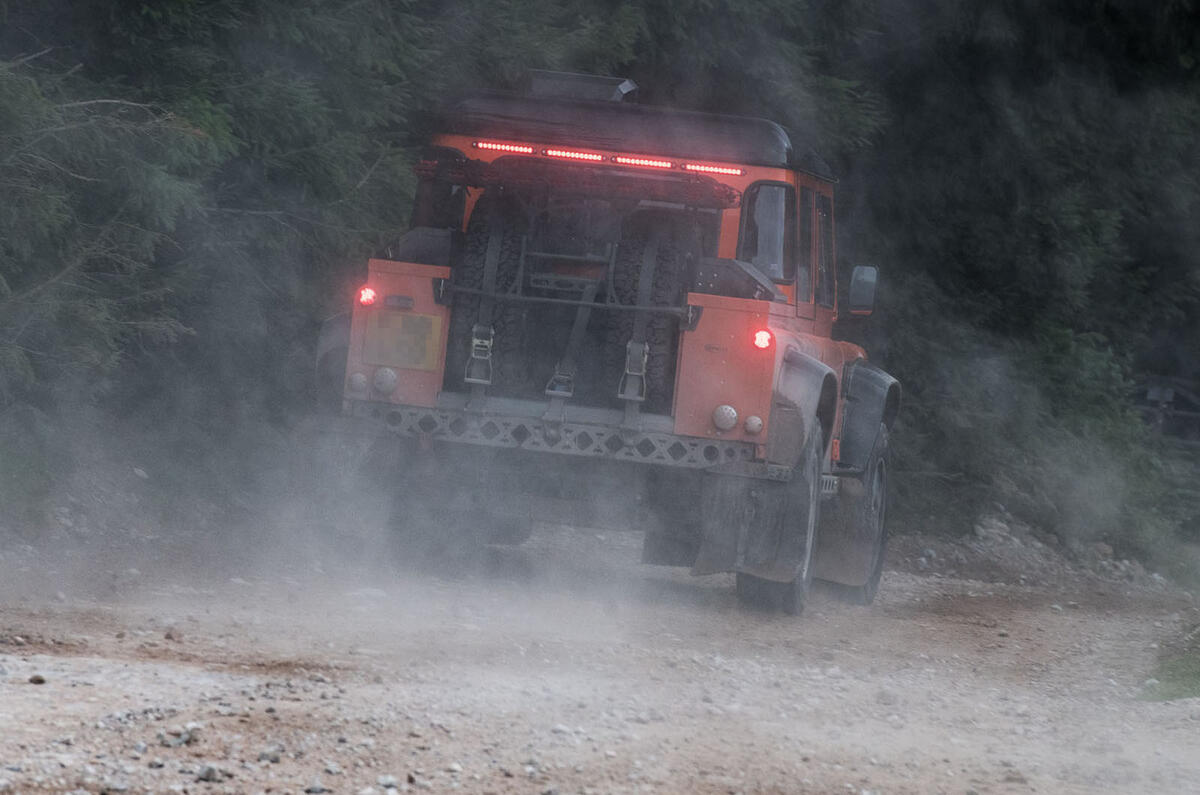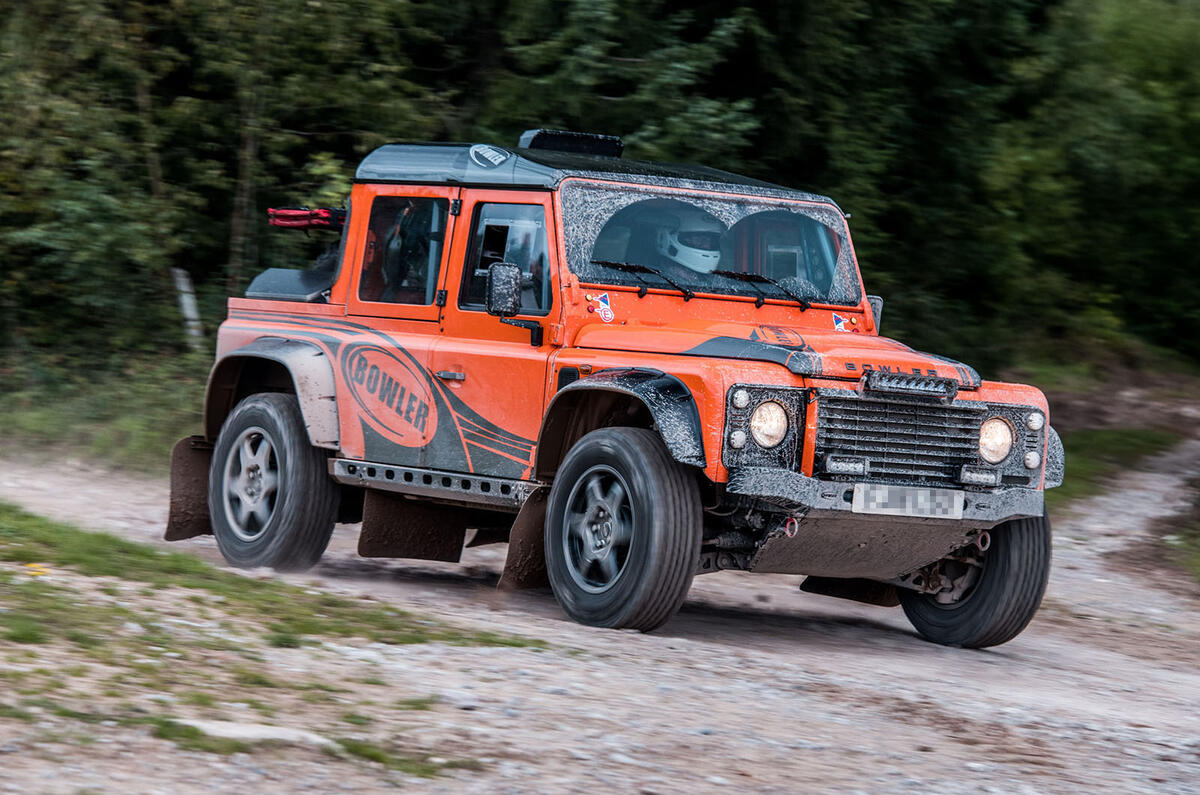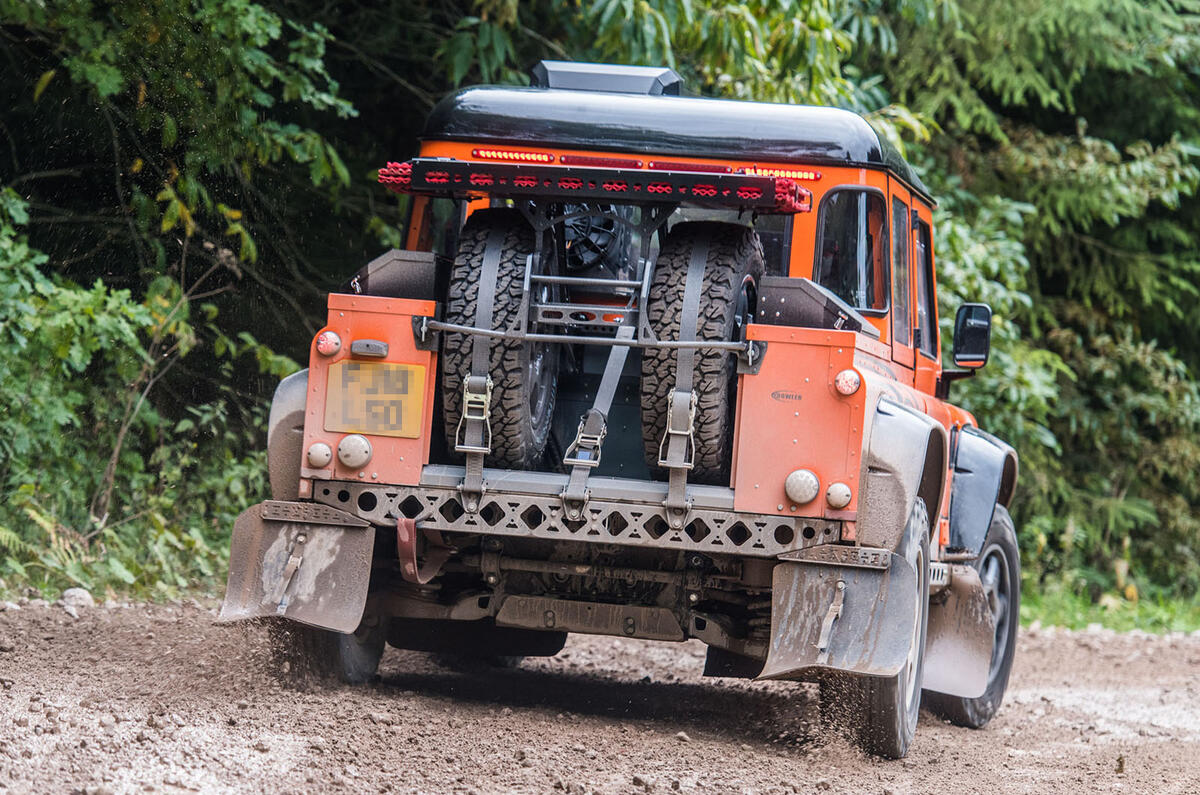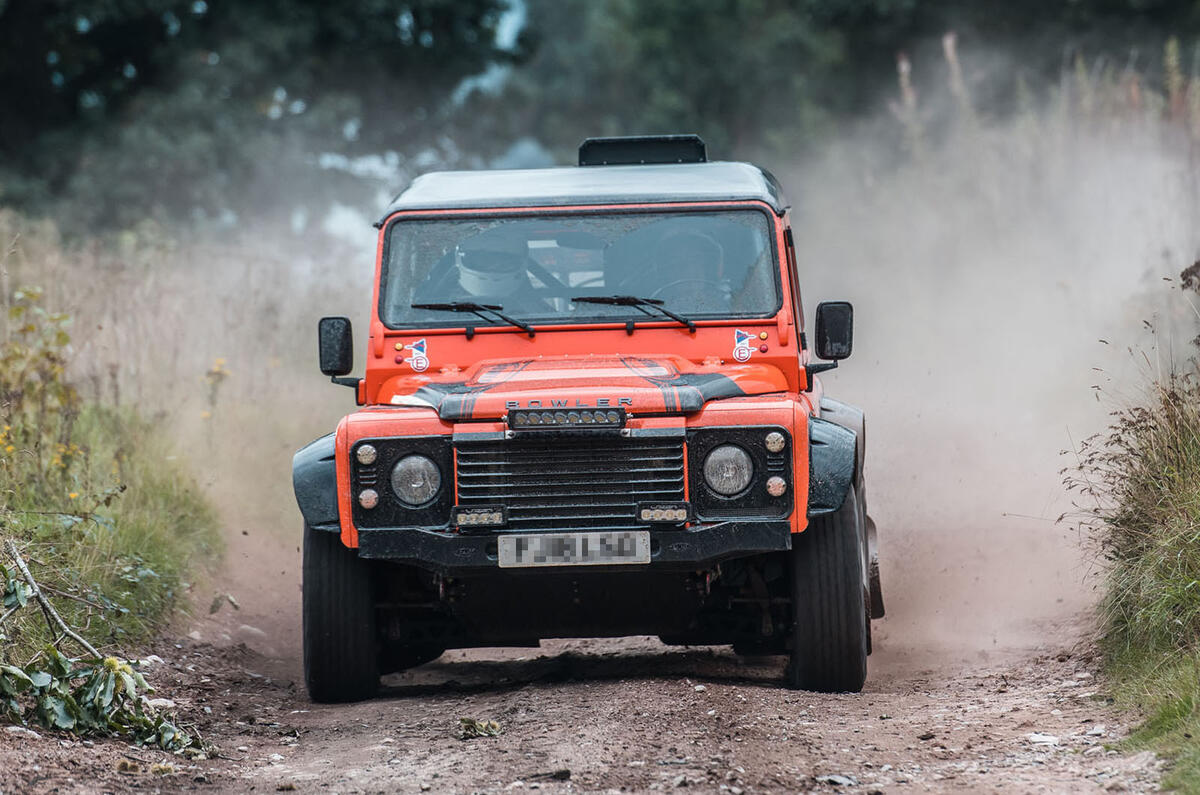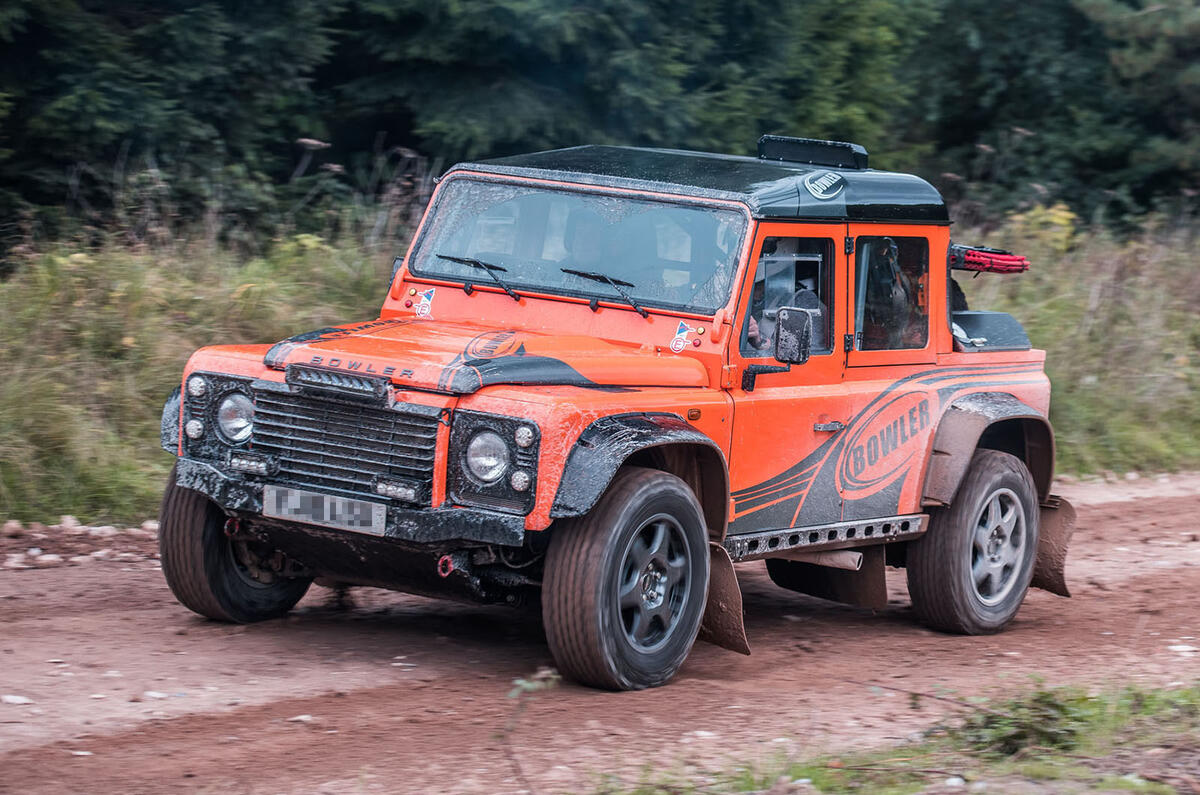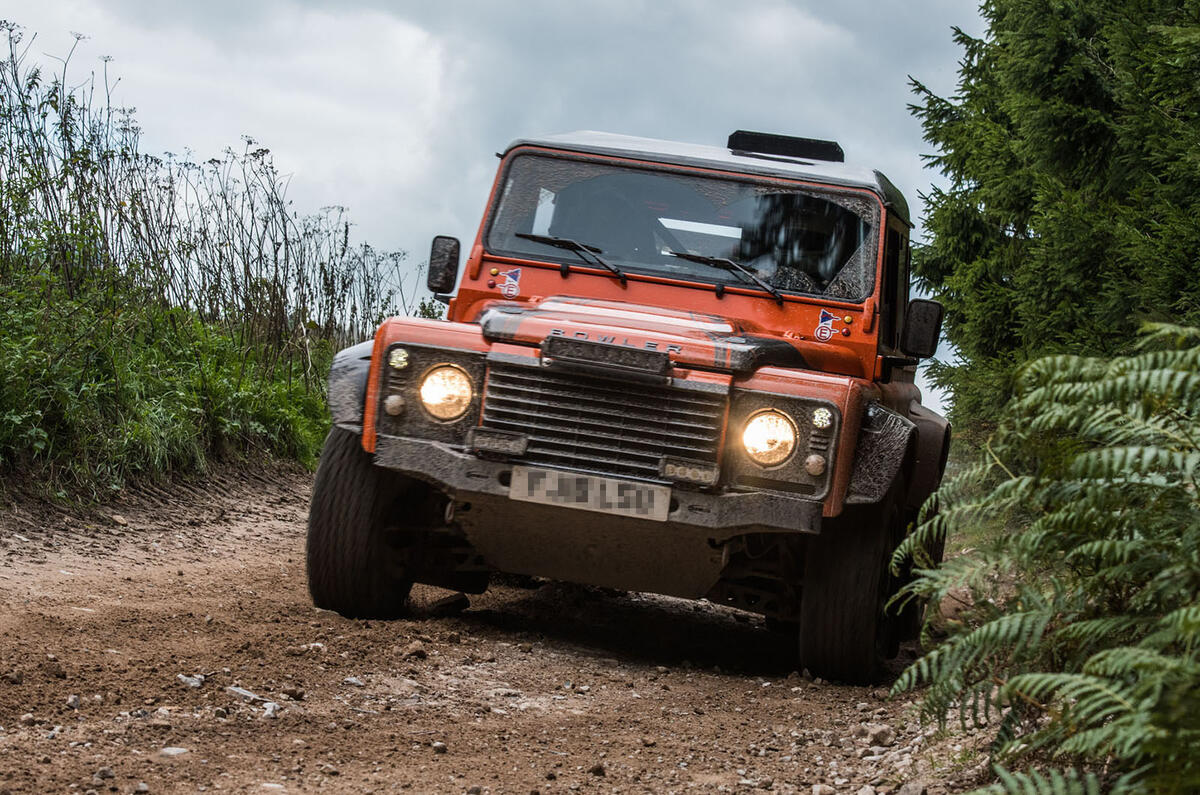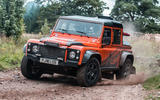The Bowler Bulldog is the latest road-legal rally raid off-road special from the people who brought you the memorably bonkers Nemesis EXR-S, and the Wildcat before it.
It is not what it looks like: another tuned and upgraded rich man’s Land Rover Defender. In fact, it’s the first car to use Bowler’s all-new, all-aluminium ‘CSP’ chassis (which is designed and built in-house, for the most part), attached to which are modified Range Rover Sport subframes, all-independent suspension (some links of which are also sourced from the Range Rover Sport parts bin) and some very special Bilstein shocks.
With its FIA-approved roll-cage becoming an integrated part of the car’s structure, the Bulldog is effectively a full spaceframe competition car – albeit one with 270mm of wheel travel and knobbly BF Goodrich All-Terrain tyres.
The car currently comes with a choice of petrol or diesel V6 engines from the Range Rover Sport, but the 280bhp, 515lb ft diesel is the one most customers pick for rally raiding, since it needs a fuel tank half the size of the one Bowler used to put in its petrol raiders in order to enable them to complete a 250-mile rally stage without a stop (even here, it’s still a whopping 221 litres, though).
Downstream of the engine is the same eight-speed ZF gearbox that Land Rover offers, although Bowler has developed its own transmission cooler, which is mounted at one end of the car’s flatbed pick-up loadbay, is fed with cool air via a scoop on the roof, and keeps the gearbox going in ultra-tough desert conditions.


